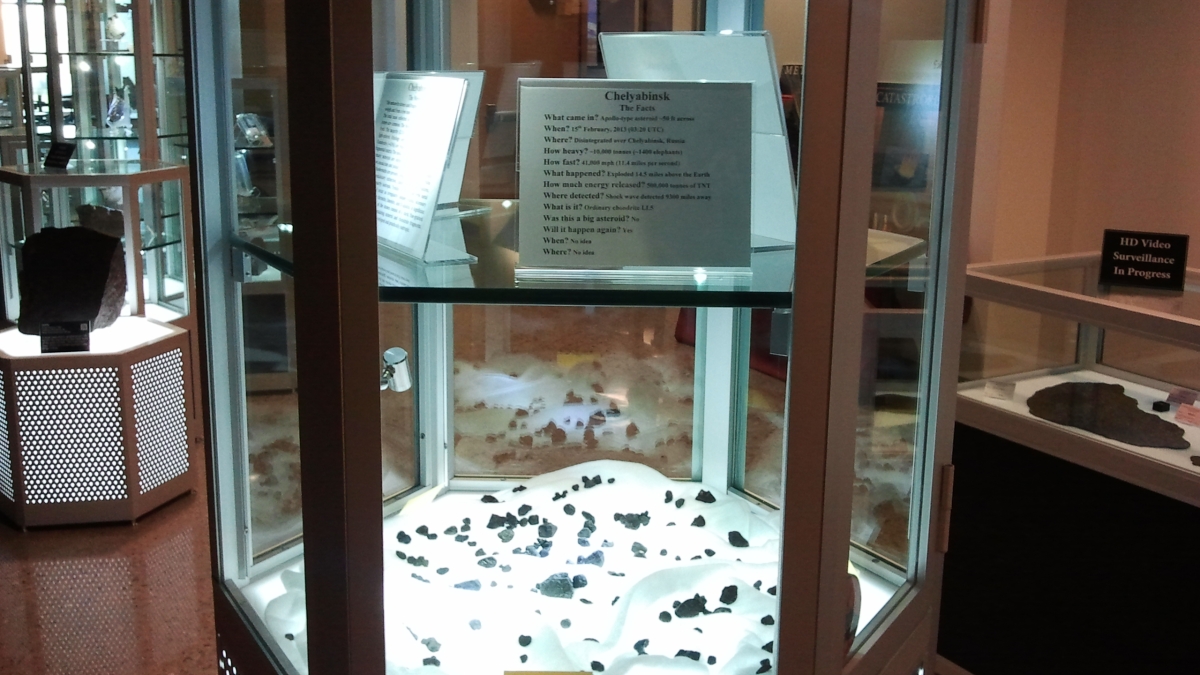Russian meteorite pieces land at ASU

ASU’s Center for Meteorite Studies (CMS) has acquired a significant new sample for its collection: pieces of the meteor that exploded spectacularly over Russia earlier this year.
Several small pieces of the meteorite that rocked Chelyabinsk, Russia in February were donated to the center by Chicago-area meteorite collector and philanthropist Terry Boudreaux.
The new acquisition is notable both for its size – close to 200 pieces totaling 531 grams join the center’s cache, the largest university collection of meteorites in the world – and for how quickly it ended up on display in the meteorite exhibition.
The center’s team worked quickly to process the specimens and assemble an exhibit that was ready for the public in a matter of hours.
The largest piece, comprised of cosmically shocked material, is plum-sized and has a mass of 47.5 grams. Classified as an LL5 ordinary chondrite, all of ASU’s fragments of this extraordinary meteorite are on display on the second floor of ASU’s Interdisciplinary Science and Technology Building IV.
“The Chelyabinsk meteor entered the Earth’s atmosphere at 41,000 mph," says Melissa Morris, assistant director of CMS and faculty research associate in ASU’s School of Earth and Space Exploration. "The blinding flash and deafening boom signaled the end of the bolide’s life as a body 17 meters (50 ft) in diameter. The catastrophic disruption of this extraterrestrial intruder, 14.5 miles above the unsuspecting residents of Chelyabinsk, created an intense blast that shattered glass in buildings around the city. All that remains are a multitude of blackened small stones scattered upon the snowy Russian landscape.”
NASA estimates the meteor had a mass of roughly 10,000 tonnes (equivalent to 1400 elephants), when it struck Earth’s atmosphere and exploded in a fireball brighter than the morning sun.
The Center for Meteorite Studies is a research unit in the College of Liberal Arts and Sciences.

